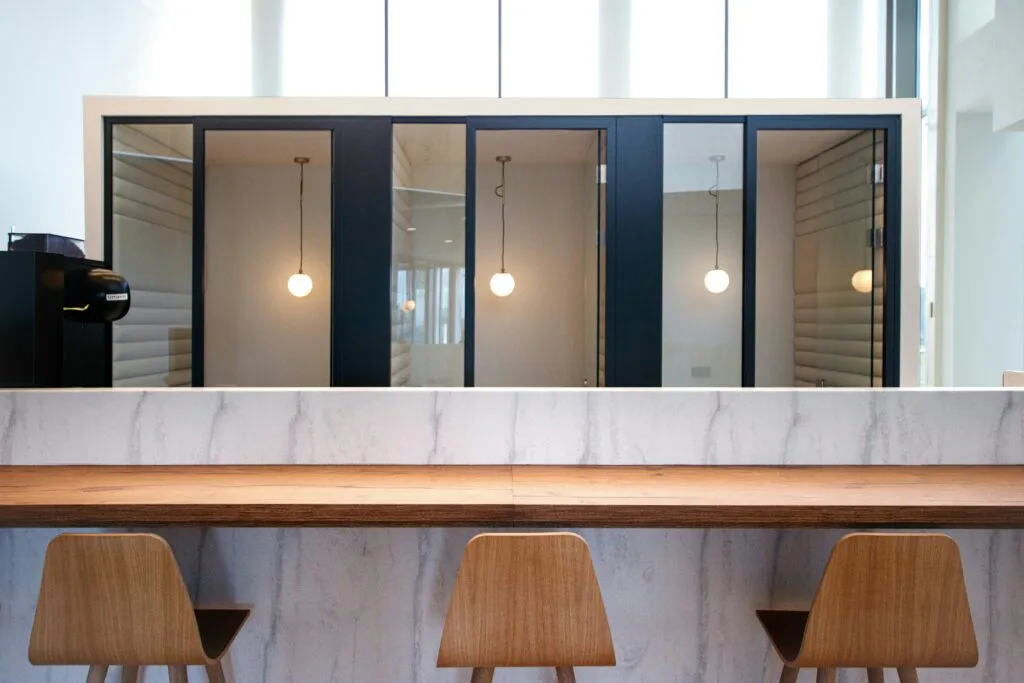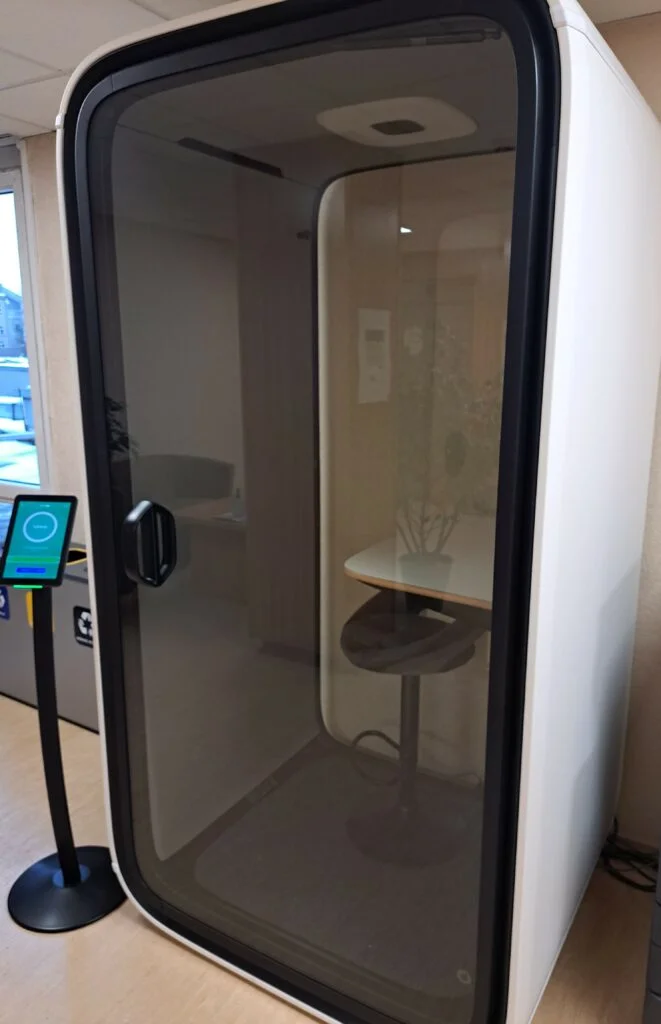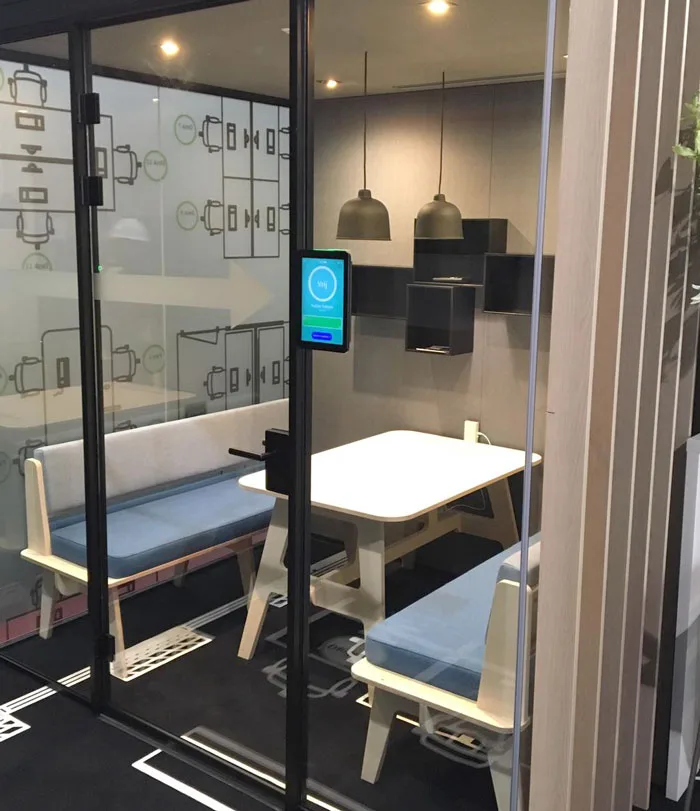
Office space planning has undergone a significant transformation in recent years. Gone are the days of rigid, compartmentalised layouts that isolate employees from one another. Instead, companies embrace open spaces and collaboration areas. Even desk sharing that foster communication and teamwork.
While open-plan offices promote interaction, they can also present challenges. Noise distractions and lack of privacy for tasks that require concentration can become challenging. Recognising these drawbacks, office designers sought a solution that would strike a balance between openness and privacy.
As companies transitioned from traditional office layouts to open-plan designs, they encountered both benefits and challenges. Open spaces fostered collaboration and communication. But they also raised concerns about privacy, noise levels, and the ability to concentrate on individual tasks.
In response to these challenges, office designers and furniture manufacturers began exploring alternative solutions that could offer the best of both worlds. They explored how to have the connectivity of open spaces and the privacy of enclosed offices. This exploration led to the new development. A versatile, semi-enclosed structures that provide individuals and small groups with dedicated spaces for focused work, meetings, or relaxation.
The design philosophy behind office pods emphasises flexibility and adaptability. These modular structures can be easily integrated into existing office layouts or installed as standalone units. They allow seamless customisation based on the specific needs of each workplace. Moreover, their compact footprint ensures efficient use of space. That makes them ideal for offices with limited square footage or those undergoing frequent reconfigurations.
Beyond their functional utility, pods depart from traditional office aesthetics. That signals a shift towards more contemporary and innovative workplace designs. Their sleek, modern appearance adds an element of sophistication to office environments. And reinforces the idea that the workplace is not just a functional space but also a reflection of organisational culture and values.
The value of these office accessories comes from their ability to meet the diverse needs of modern and smart workplaces, where the traditional dichotomy between open-plan collaboration and enclosed privacy presents challenges.
Privacy and Focus
In bustling open offices, privacy can be elusive. That hinders employees’ ability to concentrate on tasks requiring deep focus. These acoustic meeting pods offer a sanctuary within the office environment. And shields individuals from distractions and provides a space conducive to productivity.
Collaboration and Interaction
Despite their enclosed nature, they are not isolating. They rather serve as hubs for collaboration and interaction. These spaces are designed to accommodate small group meetings, brainstorming sessions, or casual conversations without disrupting the surrounding desk space.

Flexibility and Adaptability
Office pods’ modular design enables organisations to easily adapt their office layouts to changing needs and preferences. Whether used as individual workstations, meeting rooms, or relaxation areas, they can be reconfigured to suit various tasks and activities. This versatility maximises the office space utilisation. And allows companies to use their resources efficiently while accommodating diverse work styles and preferences.
Enhanced Acoustics and Comfort
One of the most significant drawbacks of open-plan offices is the lack of acoustic privacy. And that leads to increased noise levels and distractions. Accoustic booths address this issue by providing soundproof or acoustically treated environments. Individuals can work or meet without interference from surrounding activities. Additionally, their ergonomic design prioritises comfort, incorporating features such as ergonomic seating, adjustable lighting, and temperature control to enhance the user experience.
Aesthetics and Brand Identity
Beyond their functional benefits, these office booths contribute to the overall aesthetic appeal of office interiors. They reflect the organization’s brand identity and culture. Sleek, modern designs and customisable finishes allow companies to tailor pods to their unique aesthetic preferences. And to create visually striking focal points within the workspace. This attention to design enhances the physical environment. And also reinforces the company’s commitment to innovation and employee well-being.
While these pods offer numerous benefits, they have some drawbacks. It’s essential to consider these cons to make informed decisions about integrating them into office designs.
Cost Implications
One of the primary drawbacks is the upfront cost associated with their installation and maintenance. Compared to traditional office furniture or partitions, pods can represent a significant investment for companies. It can impact smaller businesses or startups operating on tight budgets. Additionally, ongoing maintenance, repairs, and updates may incur additional expenses over time.
Limited Capacity for Larger Meetings
Office pods excel at providing private spaces for individual work or small group meetings. But they may not be suitable for larger gatherings or presentations. The limited size of the office meeting pods restricts the number of participants and may not accommodate the needs of teams or departments requiring larger meeting spaces. This limitation can necessitate additional conference rooms or event spaces. And that will add to the overall cost and complexity of the office design.
Integration Challenges
Integrating into existing office layouts can pose logistical challenges, especially in older or more traditional office buildings. The modular design may not always align seamlessly with architectural constraints or structural features. And that would require modifications to accommodate their installation. Additionally, integrating office pods with existing HVAC, electrical, and data infrastructure may require specialised expertise and coordination. And that could potentially lead to delays or disruptions during implementation.
Potential for Isolation
While office pods offer privacy and seclusion, excessive use of these spaces can lead to social isolation and reduced employee collaboration. In open-plan office environments, the spontaneous interactions foster creativity and innovation. But that may be stifled if individuals retreat to office pods exclusively.
Managing pods effectively requires careful planning, coordination. And they need the implementation of appropriate strategies to optimise their use and ensure a seamless experience for employees.
Inventory and Maintenance
Begin by maintaining an inventory of available booths, including their locations, capacities, and features. Regularly inspect and maintain them to ensure they are in good working condition. Address any issues promptly to minimise disruptions to employees’ workflow.
Reservation System
Implement a reservation system that allows employees to book office pods in advance based on their needs and availability. This system should be user-friendly, accessible via desktop or mobile devices. It would be useful if it was integrated with the organization’s calendar and scheduling software for seamless coordination.

Communication and Training
Through comprehensive communication and training initiatives, educate employees about the availability and the use. Provide guidelines on reserving pods, using them effectively, and respecting shared spaces. Foster a culture of accountability and collaboration.
Monitoring and Analytics
Track usage patterns and occupancy rates using data analytics tools. Identify trends, optimise resource allocation, and inform future decision-making. Monitor employee feedback regarding their experience with pods to identify areas for improvement and proactively address any concerns.
The emergence of these pods represents a pivotal evolution in office design, responding to the shifting dynamics of modern workplaces and the need for flexible, adaptable solutions. While traditional office layouts once dominated, the rise of open-plan designs brought both opportunities and challenges. That prompted the development of the meeting pods as a means to strike a balance between collaboration and privacy.
These versatile structures offer a sanctuary within the bustling environment of open offices And provides employees with the space and resources they need to work effectively, collaborate seamlessly, and thrive in their roles. Despite their drawbacks, they are valued for their ability to enhance productivity, foster creativity, and promote employee well-being. As the workplace continues to evolve, office pods will remain integral components of office design. They support employees’ diverse needs and preferences and contributes to modern organizations’ success and sustainability.
Subscribe to the monthly newsletter!
By clicking the “Subscribe” button above, you agree to the Terms & Conditions and Privacy Policy
2014 – 2025 Proudly designed and made in Lithuania